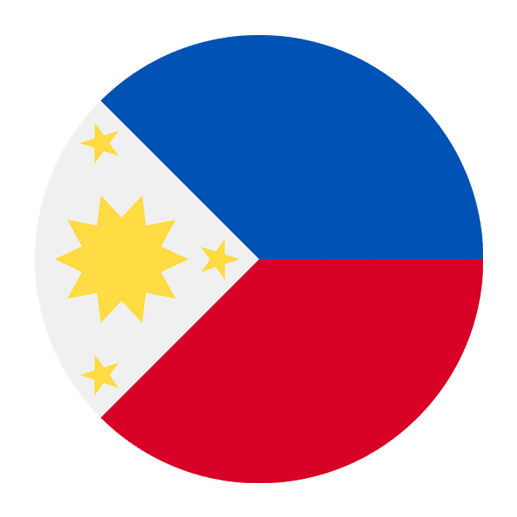Learning a new language can be both an exciting and challenging journey. One of the foundational elements of mastering a language is understanding its pronouns. Tagalog, the national language of the Philippines, has a unique set of pronouns that can initially seem complex to English speakers. However, with a little guidance, you can easily grasp their usage and incorporate them into your daily conversations. This article serves as a comprehensive guide to understanding Tagalog pronouns, making your learning process smoother and more enjoyable.
Personal Pronouns
Tagalog personal pronouns are categorized by person (first, second, third) and number (singular, plural). They are further divided into three cases: nominative (used as the subject), genitive (used to show possession), and oblique (used as the object of the verb or preposition).
Nominative Pronouns
Nominative pronouns are used when the pronoun acts as the subject of the sentence. Here are the nominative pronouns in Tagalog:
Singular:
– I: ako
– You (informal): ikaw/ka
– He/She: siya
Plural:
– We (inclusive, including the person spoken to): tayo
– We (exclusive, excluding the person spoken to): kami
– You (plural): kayo
– They: sila
Examples:
– Ako ay maganda. (I am beautiful.)
– Ikaw ay masipag. (You are hardworking.)
– Siya ay matalino. (He/She is intelligent.)
– Tayo ay pamilya. (We are family. – inclusive)
– Kami ay pupunta sa tindahan. (We are going to the store. – exclusive)
– Kayo ay magkaibigan. (You are friends.)
– Sila ay masaya. (They are happy.)
Genitive Pronouns
Genitive pronouns indicate possession. They are often used with nouns to show ownership. Here are the genitive pronouns in Tagalog:
Singular:
– My: ko
– Your (informal): mo
– His/Her: niya
Plural:
– Our (inclusive): natin
– Our (exclusive): namin
– Your (plural): ninyo
– Their: nila
Examples:
– Ang libro ko. (My book.)
– Ang bahay mo. (Your house.)
– Ang kotse niya. (His/Her car.)
– Ang pagkain natin. (Our food – inclusive.)
– Ang damit namin. (Our clothes – exclusive.)
– Ang proyekto ninyo. (Your project.)
– Ang mga alaga nila. (Their pets.)
Oblique Pronouns
Oblique pronouns are used when the pronoun is the object of a verb or preposition. Here are the oblique pronouns in Tagalog:
Singular:
– Me: akin
– You (informal): iyo
– Him/Her: kanya
Plural:
– Us (inclusive): atin
– Us (exclusive): amin
– You (plural): inyo
– Them: kanila
Examples:
– Para sa akin. (For me.)
– Sa iyo ang regalo. (The gift is for you.)
– Kasama niya. (With him/her.)
– Tayo ay para sa atin. (We are for us – inclusive.)
– Ang sulat ay para sa amin. (The letter is for us – exclusive.)
– Ang damit ay para sa inyo. (The dress is for you.)
– Ang pagkain ay para sa kanila. (The food is for them.)
Demonstrative Pronouns
Demonstrative pronouns in Tagalog point to specific things and are equivalent to the English “this,” “that,” “these,” and “those.” They are divided into three categories based on the proximity to the speaker and listener.
Near the Speaker:
– This (singular): ito
– These (plural): ang mga ito
Near the Listener:
– That (singular): iyan
– Those (plural): ang mga iyan
Far from Both:
– That (singular): iyon
– Those (plural): ang mga iyon
Examples:
– Ito ang libro ko. (This is my book.)
– Ang mga ito ay bago. (These are new.)
– Iyan ang bahay mo. (That is your house.)
– Ang mga iyan ay maganda. (Those are beautiful.)
– Iyon ang kotse niya. (That is his/her car.)
– Ang mga iyon ay luma. (Those are old.)
Interrogative Pronouns
Interrogative pronouns are used to ask questions. Here are the common interrogative pronouns in Tagalog:
– Who: sino
– What: ano
– Which: alin
– Where: saan
– When: kailan
– Why: bakit
– How: paano
Examples:
– Sino ka? (Who are you?)
– Ano ito? (What is this?)
– Alin ang pipiliin mo? (Which will you choose?)
– Saan ka pupunta? (Where are you going?)
– Kailan ka aalis? (When will you leave?)
– Bakit ka malungkot? (Why are you sad?)
– Paano mo ginawa ito? (How did you do this?)
Indefinite Pronouns
Indefinite pronouns refer to non-specific people or things. Here are some common indefinite pronouns in Tagalog:
– Someone: may tao
– Something: may bagay
– Anyone: sinuman
– Anything: anuman
– Everyone: lahat
– Everything: lahat ng bagay
– No one: walang tao
– Nothing: walang bagay
Examples:
– May tao sa pintuan. (Someone is at the door.)
– May bagay na kailangan kong gawin. (There is something I need to do.)
– Sinuman ay maaaring sumali. (Anyone can join.)
– Anuman ang mangyari, nandito ako. (No matter what happens, I am here.)
– Lahat ay masaya. (Everyone is happy.)
– Lahat ng bagay ay mahalaga. (Everything is important.)
– Walang tao dito. (No one is here.)
– Walang bagay na imposible. (Nothing is impossible.)
Reflexive Pronouns
Reflexive pronouns are used when the subject and the object of the verb are the same person or thing. In Tagalog, reflexive pronouns are formed by adding “sarili” (self) to the possessive pronouns.
Examples:
– Ako ay nagtitiwala sa sarili ko. (I trust myself.)
– Tiwala ka sa sarili mo. (Trust yourself.)
– Siya ay nakikita ang sarili niya sa salamin. (He/She sees himself/herself in the mirror.)
– Tayo ay magtiwala sa sarili natin. (We should trust ourselves – inclusive.)
– Kami ay nagtutulungan sa sarili namin. (We help ourselves – exclusive.)
– Kayo ay nagtitiwala sa sarili ninyo. (You trust yourselves.)
– Sila ay nagtitiwala sa sarili nila. (They trust themselves.)
Relative Pronouns
Relative pronouns are used to connect clauses or sentences. In Tagalog, the commonly used relative pronouns are:
– Who: na
– Which: na
– That: na
Examples:
– Ang babae na nagluluto ay si Maria. (The woman who is cooking is Maria.)
– Ang libro na binili ko ay mahal. (The book which I bought is expensive.)
– Ang bahay na malapit sa dagat ay maganda. (The house that is near the sea is beautiful.)
Pronoun Usage Tips
Understanding the proper usage of pronouns in Tagalog involves not just memorizing them, but also practicing them in context. Here are some tips to help you master Tagalog pronouns:
1. Practice with Sentences:
Create sentences using different pronouns to get a feel for their proper usage. This will help you remember them better.
2. Engage in Conversations:
Practice speaking with native Tagalog speakers or fellow learners. Engaging in conversations will help reinforce your understanding and correct usage of pronouns.
3. Use Flashcards:
Create flashcards with pronouns on one side and their English equivalents on the other. Regularly reviewing these flashcards will enhance your recall.
4. Listen to Tagalog Media:
Listen to Tagalog songs, watch movies, or follow Tagalog podcasts. Pay attention to how pronouns are used in different contexts.
5. Read Tagalog Texts:
Reading books, articles, or online content in Tagalog can expose you to various sentence structures and pronoun usages.
6. Practice Writing:
Write short paragraphs or essays in Tagalog, focusing on using different pronouns. This will help solidify your understanding and improve your writing skills.
7. Seek Feedback:
Don’t hesitate to ask for feedback from native speakers or language teachers. They can provide valuable insights and corrections to help you improve.
Conclusion
Mastering Tagalog pronouns is a crucial step in becoming proficient in the language. While it may seem daunting at first, consistent practice and immersion will make it easier over time. Remember to be patient with yourself and enjoy the learning process. With dedication and practice, you’ll find yourself using Tagalog pronouns naturally and confidently in your conversations. Happy learning!

